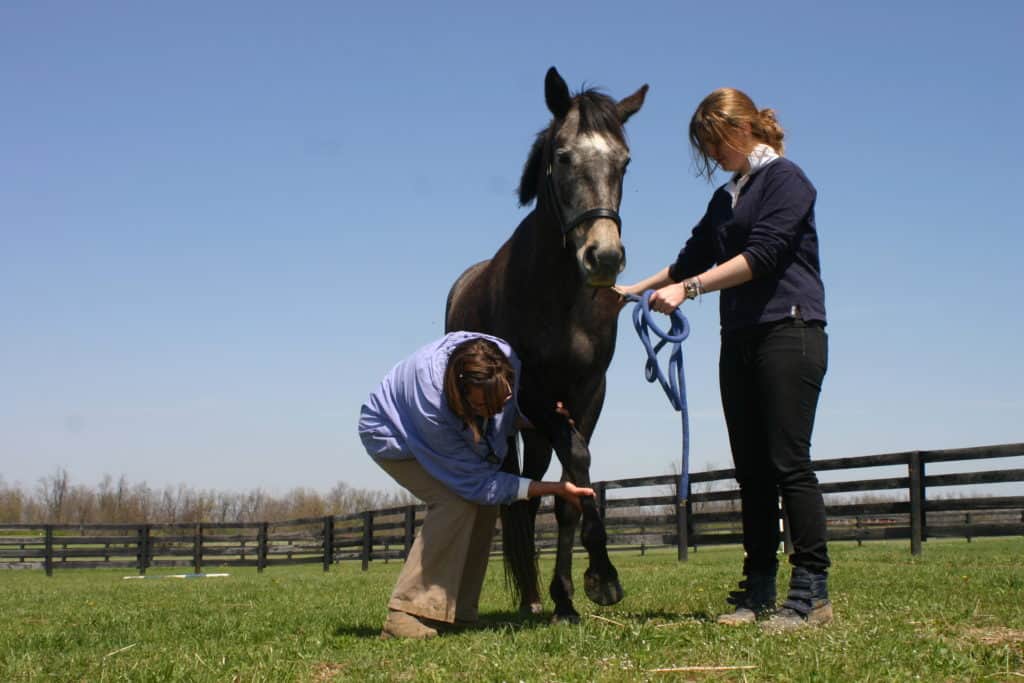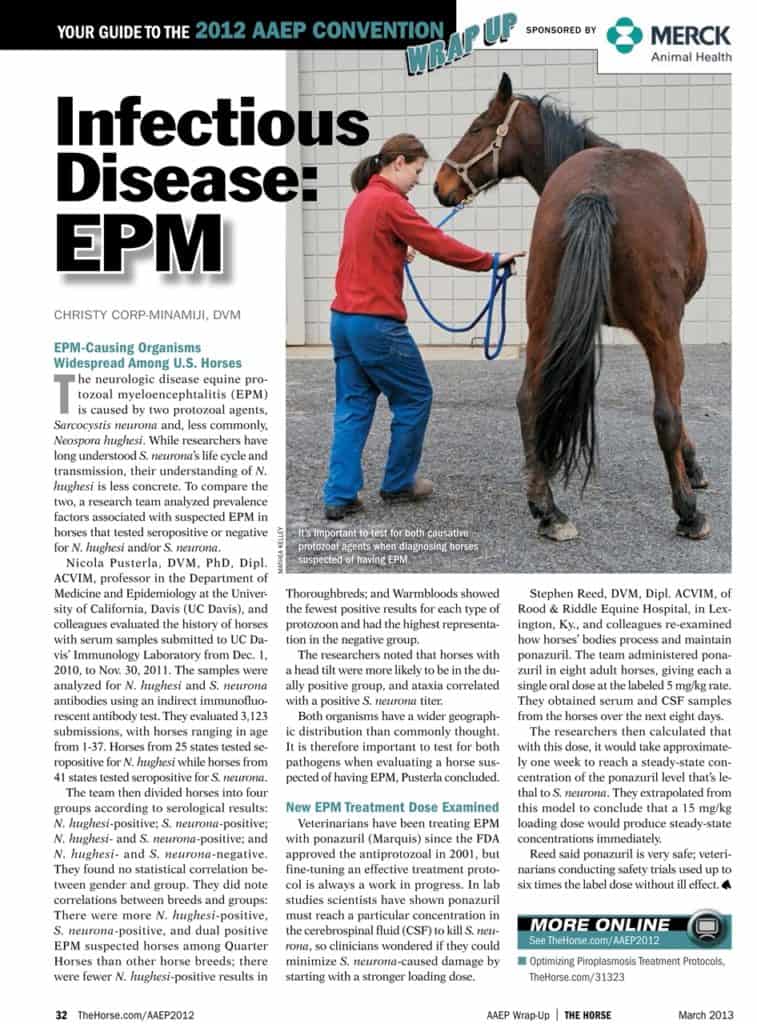Equine Neurologic Disease
The accurate diagnosis of equine neurologic disease is important for several reasons.
The accurate diagnosis of equine neurologic disease is important for several reasons.
The development of a semi-quantitative assay could help improve EPM diagnostics, researchers say.

One vet reviews EPM’s variable clinical signs and the current diagnostic and treatment options available.

Learn about the organisms that cause equine protozoal myeloencephalitis (EPM) and treatment options for the disease.

One veterinarian reviewed the steps in triaging acute equine neurologic emergencies in the field.

EPM-causing organisms have a wider geographic distribution in the United States than commonly thought.
The presentation will cover what owners should do if they think their horse might be neurologic and more.

Achieving therapeutic drug levels sooner using a loading dose could minimize S. neurona-caused damage.

The discussion focused on four continuing problems: EHM, EPM, WNV, and other encephalitides.
Are there any treatments available for EPM that are safe for use in pregnant mares?

EPM is a tricky disease to definitively diagnose and treat and, thus, has been an area of much research.

A new EPM test uses three antigens to measure the antibody response to parasite infection in serum or CSF.

S. neurona causes the neurologic disease EPM. A fully sequenced genome will provide a resource for virulence factor and S. neurona antigen characterization, which could lead to new immunizations or therapeutics against the parasite.

Equine protozoal myeloencephalitis (EPM) continues to pose diagnostic and treatment challenges.

Dr. Steve Reed of Rood & Riddle presents case studies and videos of horses with Equine protozoal myeloencephalitis (EPM), offering insight on diagnosis and treatment from the clinician’s perspective.
To help owners stay on top of EPM and WNV, Merck Animal Health has developed two new comprehensive websites.
Stay on top of the most recent Horse Health news with
"*" indicates required fields